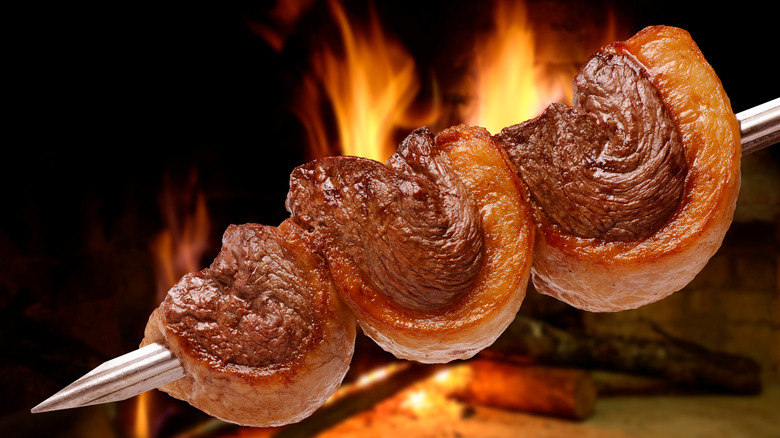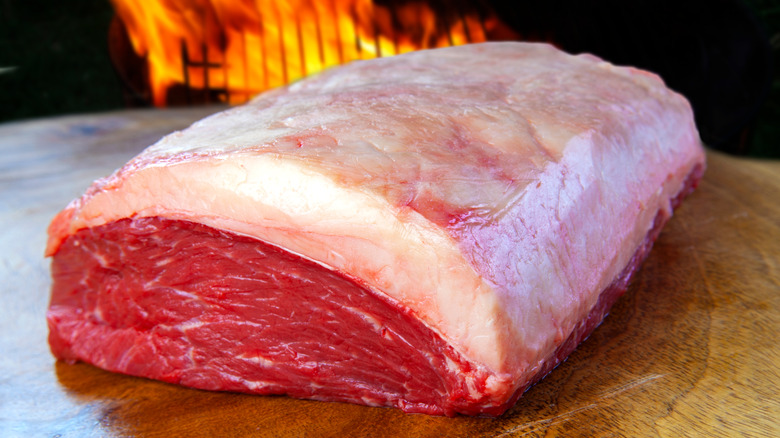What Type Of Steak Cut Is Picanha?
Brazil has the reputation of being heaven for beef lovers, powered by the international popularity of Brazilian steakhouses like Fogo de Chão. These restaurants are famous for a dining style called rodízio, in which diners pay a fixed price and are permitted to enjoy all the meat they can eat, served by waiters who circulate the eatery with long skewers of freshly grilled meat. Many consider rodízio a luxury, but Eater reveals that the style has surprising blue-collar roots. Such restaurants originally focused on feeding hungry truck drivers following the massive expansion of Brazil's road networks in the mid-1900s.
Steakhouses in the rodízio style are known as churrascarias. Per Taste Atlas, this derives from the term churrasco, referring to the unique Brazilian style of barbecue that entails skewering meat and grilling it over a wood-burning fire. This cooking method can be traced back to the Gauchos, European immigrants who settled in the southern part of Brazil, Rio Grande do Sul, in the 1800s. The Gauchos would dine around communal fires, eating meat from large skewers. Beef, lamb, pork, and chicken may be used, but the meat most closely associated with churrasco, and the most prized by the people of Brazil, is a cut of steak called picanha.
Picanha corresponds to the rump cap
Picanha (pronounced "pee-kahn-ya") comes from the very top of the hindquarters and is also known as the rump cap, sirloin cap, or culotte steak (via Steak School). It is a triangular cut with a large fat cap, and because this particular muscle doesn't get much use, the meat is very tender. Despite this, Standing's Butcher notes that picanha has relatively little intramuscular fat, giving it a unique combination of leanness, tenderness, and flavor. If you see picanha at a churrascaria, it will typically be bent into a curved shape on the skewer, the fat cap crisping up from the flame.
Unfortunately, picanha is challenging to find in the United States unless you go to a churrascaria. One such steakhouse, the international chain Texas de Brazil, explains that American butchers typically cut picanha into smaller cuts like loin and round steaks. If you want to get picanha for yourself, you will likely need to place a special order for it with a local butcher. The good news is that because American butchers don't place great value on the cut, picanha is relatively cheap as steaks go, and it packs so much flavor that Brazilians typically only season it with salt.

